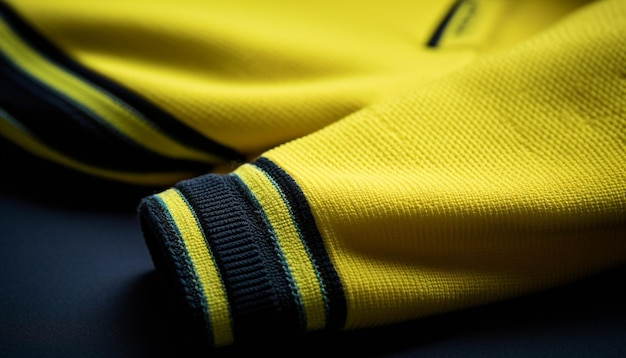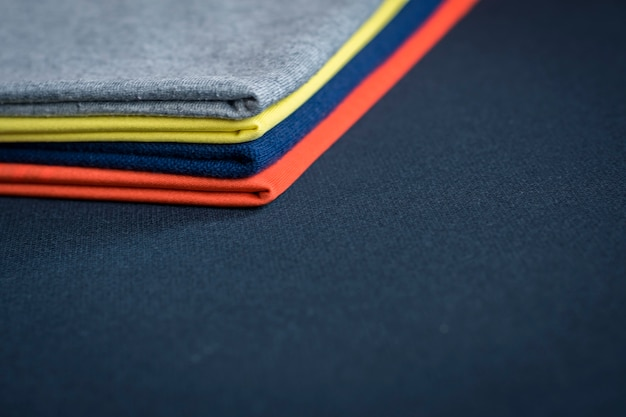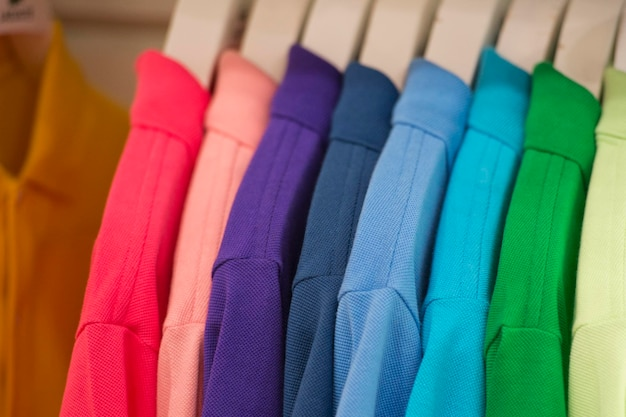A Comprehensive Guide to Choosing the Best Uniform Colors for Your Business and Employees
Choosing the right uniform colors is more than just appearance; it's a key to establishing your business image, enhancing employee attitude, and making a lasting impression on your customers. From dressing up customer-facing employees to creating cohesive looks for all of your staff, uniform colors can create your brand identity, convey professionalism, and even boost productivity. This guide will explain how to choose the right uniform colors for your business, so that you represent your brand identity as well as address the specific needs of each department.
Why Uniform Colors Matter
First Impressions and Brand Identity
Uniforms typically are the first impression customers get when they interact with your company, so choosing the right color is extremely important. Thoughtfully chosen uniform colors reinforce your company's brand image, setting the tone for customer interactions and employee culture. A uniform color palette communicates very strongly that your business is professional, consistent, and reliable, while poor color selection communicates otherwise. The correct colors also enhance your brand message and values, as a visible representation of what your company stands for.
Emotional Impact on Employees
Colored uniforms are not just about looks—just because they look good doesn't mean they can't impact your workers' moods. Employees who wear uniforms of colors that reflect professionalism and oneness are more likely to feel that they belong and have pride in their work. Blue shades are calming and promote a serene and calm atmosphere, but harsh colors will energize and motivate your employees. If your employees like wearing their uniforms, they will work more effectively, contributing to an overall good working environment.
Customer Perception
Colored uniforms are not just about looks—just because they look good doesn't mean they can't impact your workers' moods. Employees who wear uniforms of colors that reflect professionalism and oneness are more likely to feel that they belong and have pride in their work. Blue shades are calming and promote a serene and calm atmosphere, but harsh colors will energize and motivate your employees. If your employees like wearing their uniforms, they will work more effectively, contributing to an overall good working environment.

Factors to Consider When Choosing Uniform Colors
Branding and Symbolism
Your color of uniform should reflect your brand identity. Consider what emotions you want to evoke with your color choice. Do you want to convey reliability, energy, or creativity? Navy blue or grey can be employed to convey professionalism and trustworthiness, while brighter colors like orange or yellow can convey excitement and enthusiasm. Understanding the meaning of different colors and how they impact your target audience is crucial in making a choice that suits your brand.
Practicality and Environment
Your company's business type and the type of environments where your employees operate should also help determine your choice of uniform color. For instance, warehouse employee uniforms should be functional, wear-resistant, and easily visible during different lighting setups. In contrast, customer-serving employees might require uniforms that look good while retaining comfort. Practicality must therefore be balanced against style to determine that uniforms should be functional, easy to upkeep, and able to withstand working conditions.
Industry Norms
There are certain industries that have particular standards for uniform colors that you need to consider when making your choice. For example, healthcare professionals typically wear white to show cleanliness and professionalism, whereas construction workers usually wear high-visibility colors to ensure safety. Understanding your industry's color conventions will help you make a choice, with your staff following customer expectations as well as safety guidelines.
Department-Specific Uniform Colors
Customer Service and Frontline Staff
For customer service staff and frontline staff, uniform colors should express trustworthiness, professionalism, and friendliness. Blues, greens, and light greys are wonderful choices for such staff. Blue, in particular, has associations with tranquility and reliability, which may generate confidence in the customer. Blues and t-shirts of similar hues can be friendly without losing professionalism.

Sales and Marketing
Your company's representative face is the sales and marketing personnel, and hence their uniforms need to exude energy, passion, and confidence. Highly chromatic and vivid colors like red, orange, and yellow work best to create a lasting impact. These are also very attractive colors, and this is very important for employees who have direct contact with potential customers. Using polos or regular attire in these colors can motivate your team and make them extremely competitive in the market.
Management and Executives
Management and executive leadership teams need to emphasize authority, trustworthiness, and professionalism. Navy blue, black, and dark gray are classic favorites that convey leadership and sophistication. They also visually contrast significantly from other departments' more colorfully adorned clothing, allowing physical differentiation between leadership roles. These colors also assist in maintaining professionalism with the neat, clean-cut uniform appearance of styled or polo-shirt renditions.
Operations and Logistics
The operations and logistics department is often on the move and in places where visibility is of utmost importance. These are light yellow, light orange, or light green, high-visibility colors. They are not only required to make workers easily visible, but they also maintain safety and efficiency in high-pace settings. Safety vests and high-visibility quick-drying t-shirts have to be the norm for this department.

Human Resources and Administration
Administrative and HR personnel are also responsible for maintaining the smooth operation of your company in check. These should also wear calm, reliable, and professional-looking clothes in light blue, beige, or light grey shades. Light colors offer a secure yet professional look that goes well with corporate without making your HR staff look anything less than reliable and inviting.
Technical and IT Departments
For the technical and IT departments, uniforms in business casual colors should likewise prioritize practicality and professionalism. Black, royal blue, and charcoal grey would be good options. They stain and wear off less easily since they are darker colors as well, which is great for the departments where a lot of hands-on work happens. Polos or work shirts in these colors provide comfort and professionalism without giving up on function.
Creative Departments
Creative departments excel in environments that foster creativity and out-of-the-box thinking. Fashion for such departments can be creative and casual. Light blues, purples, and even unconventional colors like teal or mustard yellow can evoke creativity and instill a sense of fun work environment. T-shirts, polo shirts, or business casual in these colors can enable creative employees to be creative while keeping the company brand intact.
Production and Manufacturing
In manufacturing and production environments, safety and durability are most important. Safety hues like khaki, neon green, and neon orange are used to ensure workers are seen in hazardous environments. Coveralls, safety vests, and hats are just some of the high-visibility work uniforms that need to be on hand. They need to be made with robust materials that will withstand the task at hand.
Trendiest Colors for Uniforms Right Now
The trendiest uniform colors today are a blend of traditional and modern colors that are not only practical but also trendy.
· Black: Black is a classic, chic, and versatile choice that works well for a wide variety of industries. It’s also practical for hiding stains and looks sophisticated in any setting.
· White: White is a staple in healthcare and hospitality for its clean, professional appearance.
· Purple: A regal and sophisticated color, purple is a great alternative to black and can be used in a variety of industries.
· Blush: A softer, more feminine alternative to white, blush works beautifully in beauty or salon settings.
· Navy: Known for its calming effect and reliability, navy is perfect for professional environments and industries like business or beauty.
· Green: Green is a versatile color that’s ideal for industries focusing on eco-friendliness or those working with individuals with specific complexions.
· Grey: A neutral and professional color that pairs well with almost anything, grey is ideal for creative or tech roles.

Crafting a Cohesive Uniform Color Scheme
When crafting your uniform color scheme, it’s important to start with a strong base color that aligns with your brand. Neutral shades like black, navy, or grey work well as base colors because they are never out of fashion and always look professional. You can then utilize accent colors to create visual interest. Accent colors like red, green, or yellow can be utilized to differentiate specific roles or departments. The key is to balance functionality, professionalism, and your brand identity.
It's also important to prefer functionality over trends. Trendy colors may look good, but they may not always be long-term friendly. Choose classic, professional color schemes and refresh them subtly in the long run.
Conclusion
Choosing the best uniform colors for your business is a strategic decision that can affect your business's image, employee morale, and customer experience. By making the right choices of colors for each department, you can create a cohesive, professional look that reflects your brand identity and industry expectations. Remember that the objective is to have your team feel confident and capable, while the uniforms project professionalism and adhere to your business's values.

.png)








